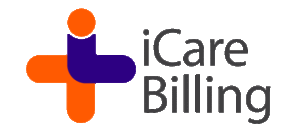The medical billing outsourcing sector in the healthcare industry across the United States has been rapidly growing, particularly in the last two decades, due to technological innovations in health tech. Currently standing at a market size of USD 3.73 billion in 2022, the market is projected to reach around USD 12.48 billion by 2032, showcasing a robust compound annual growth rate (CAGR) of 12.9% from 2023 to 2032. This article will delve into the key components, services, and end-user segments that shape the industry and explore the factors contributing to its growth, potential challenges, and future opportunities.
Market Overview:
Medical billing, practice management, or revenue cycle management (RCM) outsourcing has become a pivotal process for healthcare facilities to streamline insurance reimbursement and financial operations. Regarding software capabilities, outsourcing medical billing involves outsourcing billing tasks to third-party software programs, enhancing efficiency, reducing administrative workload, and ensuring proper payment for services rendered. It also involves human interaction to ensure claims are audited before submission, follow-up on claims, denial management, and overseeing the entire process to ensure reimbursement from insurance carriers and patients. The U.S. Medical Billing Outsourcing Market has witnessed substantial growth, driven by rising online billing platforms, government support, and the availability of efficient revenue cycle management solutions that support the healthcare industry’s focus on patient care and innovation.
Key Components Driving Growth:
-
Outsourcing Dominance:
- The outsourced segment has emerged as a key player, capturing a significant market share. Outsourcing provides a cost-effective and transparent alternative to in-house medical billing workflows, increasing healthcare operational efficiency and reducing administrative burdens.
-
Front-End Services Leading the Way:
- The patient onboarding process, including patient appointment scheduling, answering pre-registration questions, registering patients for qualified healthcare professionals, verifying insurance eligibility, insurance benefits verification, and pre-approval or prior authorization, involves a sophisticated layer between patient check-in and receiving services. All these steps are essential in the medical billing process to ensure the efficient management of the patient intake process, improve the patient experience, and achieve quicker reimbursement from insurance carriers without hurdles.
-
Hospitals at the Forefront:
- Larger medical groups, such as hospitals, contribute the largest revenue share, around 45.50% in 2022. The increasing complexity of billing and reimbursement procedures in larger healthcare organizations has prompted healthcare systems to adopt intuitive RCM services, minimizing errors and ensuring cost-effective solutions, creating a need for healthcare EDI and Software vendors to sell their services, resulting in more economic activity in the healthcare market.
Market Dynamics:
Drivers:
- Government Support: Increasing government funding and programs in the past and current have propelled market growth, with initiatives like cloud-based EHR, EMR, Practice Management, and Medical Billing software facilitating comprehensive Revenue Cycle Management (RCM) capabilities.
- Automation Technology: The surge in automation technology, particularly Robotic Process Automation (RPA) tools and the use of Artificial Intelligence (AI), has accelerated the processing of medical billing data, providing quick and accurate results by reducing errors and improving efficiency.
Restraints:
- Lack of Trained Professionals: The shortage of trained healthcare professionals challenges market growth, emphasizing the need for experienced billing providers.
- Lack of Free EHR: There has been a time when small practices, unable to afford thousands of dollars annually, were given the option to use Free EHR. However, all the free options have either not been innovated over time or have been sold out to corporate companies that now charge providers to use Free Electronic Health Record Systems. This also limits healthcare providers’ ability to innovate and focus on other areas.
Opportunities:
- Innovative Techniques: Ongoing research and development efforts and increasing investments in R&D present opportunities for the industry to leverage new technologies and advanced resources.
COVID-19 Impact:
The COVID-19 pandemic has positively impacted the growth of the medical billing outsourcing industry due to laboratory services’ intention to help fight the Covid, and that led Medical Billing Outsourcing Companies to step in and offer Medical Billing Services. The accelerated adoption of digital technologies in healthcare, driven by the pandemic, has created new opportunities. The emphasis on building an effective digital health infrastructure and increased consumer interest in online bill payments has fueled the demand for medical billing outsourcing.
Future Outlook:
As we look ahead, the U.S. Medical Billing Outsourcing Market is poised for significant growth. The industry is expected to witness technological advancements, increased focus on regulatory compliance, and a growing need for cost-effective and efficient processes.
Conclusion:
In conclusion, the U.S. Medical Billing Outsourcing Market presents a promising landscape with substantial growth potential. The increasing reliance on outsourcing, technological advancements, and a supportive regulatory environment shape the industry’s trajectory. As healthcare providers seek more efficient and cost-effective solutions, the medical billing sector is positioned to play a crucial role in shaping the future of healthcare administration.
